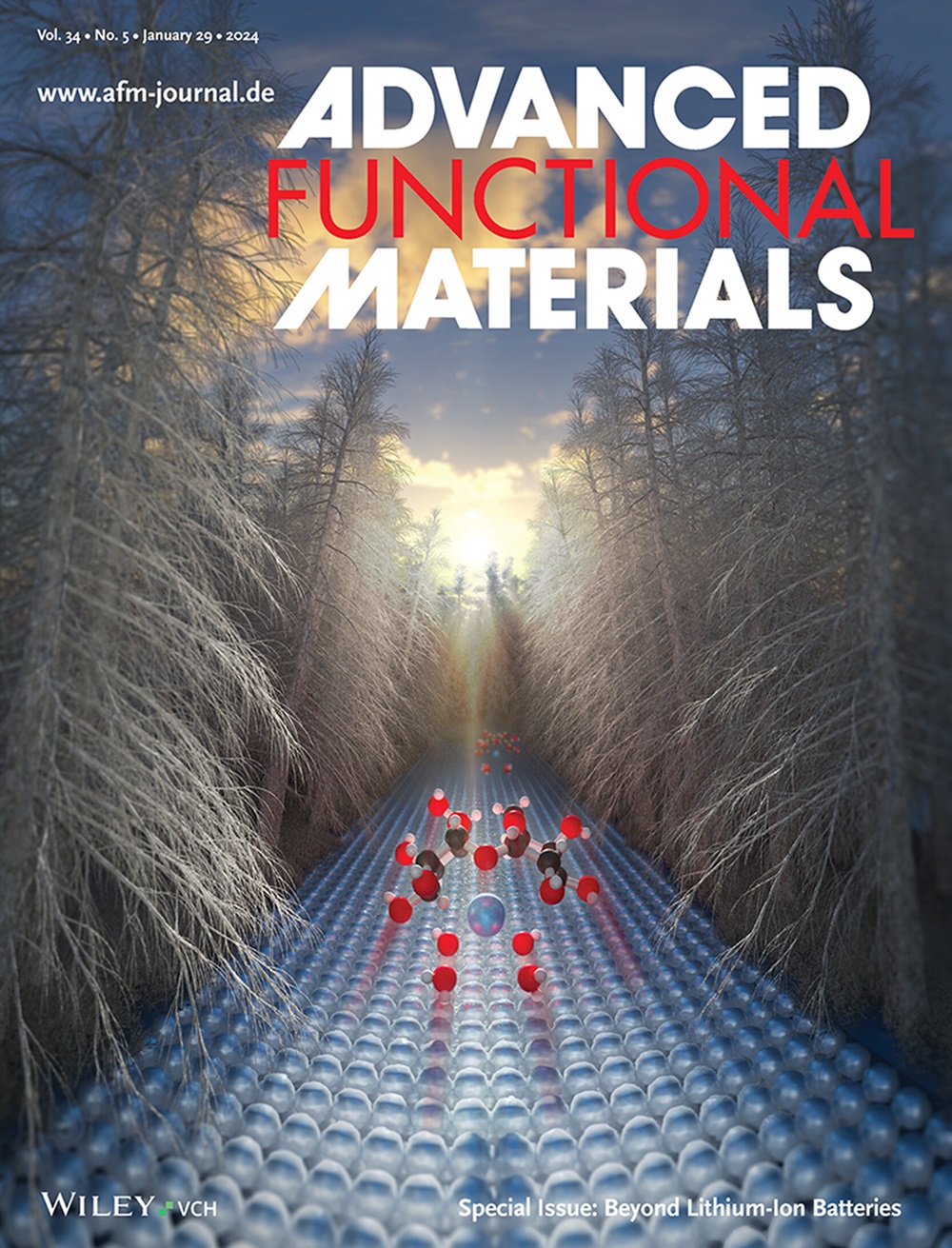Boosted Oxygen Evolution on Iridium through Dual-Interface-Diffusion Generated Oxygen Vacancies in Supporting Tungsten Oxide
IF 18.5
1区 材料科学
Q1 CHEMISTRY, MULTIDISCIPLINARY
引用次数: 0
Abstract
For oxygen evolution reaction (OER) in proton exchange membrane water electrolyzer (PEMWE), iridium (Ir) remains the primary active component in catalysts, but its high cost and low utilization efficiency pose significant barriers to large-scale deployment. Designing high-performance supported Ir-based catalysts is of urgent necessity. By constructing a hierarchical WO3@TiN supporting material, an Ir/WO3@TiN catalyst is designed with superior OER activity and stability. The optimized Ir/WO3@TiN catalyst exhibits mass activity (MA) up to 920.93 mA mgIr−1, over 20 times that of commercial IrO2. Experimental evidences confirm the facilitated oxygen vacancies induced by the diffusion of Ti and Ir at the interfaces. The membrane electrode assembly (MEA) fabricated with the Ir/WO3@TiN anode catalyst (0.3 mgIr cm−2) can operate at 1.0 A cm−2 with merely 1.60 V (70 °C), with durable operation for over 200 h. Theoretical calculations reveal that the doping of Ti and Ir atoms in WO3 lattice promotes formation of oxygen vacancy, which can optimize the surface electronic structure on Ir and lower the energy barrier of *OOH formation, leading to the boosted OER activity. This work not only introduces new strategies for support design but also shows their great potential for practical applications.

求助全文
约1分钟内获得全文
求助全文
来源期刊

Advanced Functional Materials
工程技术-材料科学:综合
CiteScore
29.50
自引率
4.20%
发文量
2086
审稿时长
2.1 months
期刊介绍:
Firmly established as a top-tier materials science journal, Advanced Functional Materials reports breakthrough research in all aspects of materials science, including nanotechnology, chemistry, physics, and biology every week.
Advanced Functional Materials is known for its rapid and fair peer review, quality content, and high impact, making it the first choice of the international materials science community.
 求助内容:
求助内容: 应助结果提醒方式:
应助结果提醒方式:


